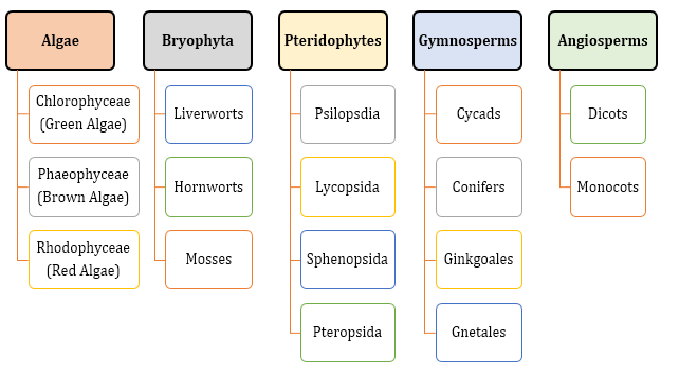Introduction
Akanksha Soni, Academic Content Writer at Edumarz
- R.H. Whittaker proposed the five- kingdom classification in 1969, including Monera, Protista, Fungi, Plantae, and Animalia.
- Algae, Bryophytes, Pteridophytes, Gymnosperms, and Angiosperms are the plant kingdom’s classifications.
- This kingdom includes multicellular eukaryotes, organisms containing chlorophyll that are vital for photosynthesis commonly called plants.
- Some plants behave like autotrophs.
- True plants collect their food in the form of starch or sugar.
- Some plants also behave heterotrophic such as insectivorous plants or parasites. For example:- Bladderwort and Venus flytrap (Insectivorous plant), Cuscutta (Parasite).
- Plants are non-motile.
- The characteristics of a living plant include movement, nutrition, respiration, sensitivity, reproduction, excretion, and growth.
- Plants have a rigid structure that surrounds the cell membrane known as the cell wall which is mainly made up of cellulose.
- Healthy plants include firm leaves, well-formed flowers and fruits, and a well-developed root system.
- Linnaeus provides an artificial classification system. This classification used gross superficial morphological characters and was based mainly on vegetative characters or the androecium structure.
- Natural classification systems are based on natural affinities among the organisms and consider not only the external features but also included the internal features such as ultrastructure, anatomy, embryology, and phytochemistry. This type of classification for flowering plants was given by George Bentham and Joseph Dalton Hooker.
- Phylogenetic classification systems are based on evolutionary relationships between organisms, with the assumption that organisms from the same taxon share a common ancestor.
- Cytotaxonomy is founded on cytological concepts such as chromosome number, structure, and behaviour.
- Chemotaxonomy is based on the chemical ingredients for the plants.


